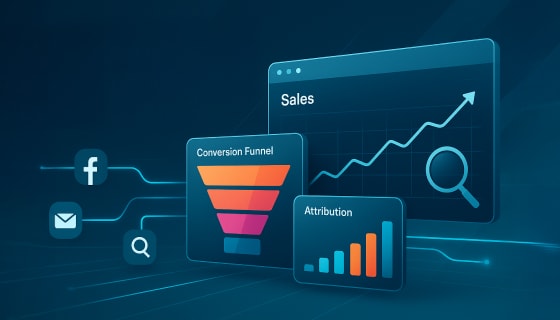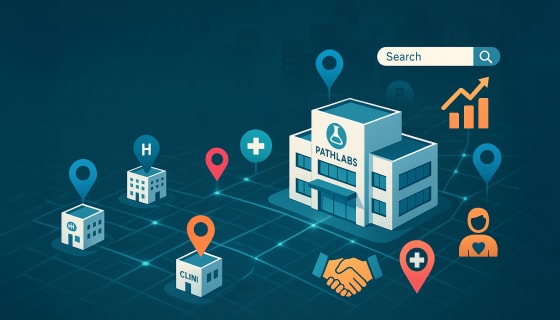Every patient exploring joint or knee replacement hits the same wall—too much information, not enough clarity. Between Google searches, online forums, clinic websites, and word-of-mouth advice, they’re left with more questions than answers.
For orthopedic clinics, this creates a growing gap between patient expectations and internal capacity. These early moments often shape their entire decision-making journey. This is where AI chatbots for orthopedic surgeons prove invaluable. Designed to engage patients at scale, they offer timely responses, reduce admin load, and guide high-intent individuals toward consultation, without compromising your team’s focus.
In this blog, we’ll explore how AI chatbots can modernize your patient communication, drive more qualified consultations, and ensure your clinic meets the expectations of today’s digitally driven patients. Stay with us to uncover practical strategies, platform integrations, and performance metrics that matter.
Smarter Patient Engagement with AI Chatbots
Orthopedic patients aren’t just browsing casually. They’re in discomfort, anxious for relief, and actively looking for answers. This urgency makes patient engagement a critical opportunity—and challenge—for orthopedic surgeons.
This is where AI chatbots are designed to act as intelligent virtual assistants, simulating real-time human conversations. Powered by machine learning and natural language processing (NLP), they can deliver accurate responses in under two seconds, some in as fast as milliseconds.
It’s no surprise that over 987 million people now use AI chatbots globally, with 35% relying on them specifically to get quick answers or explanations. That trust is steadily extending into healthcare, where speed and clarity often shape patient decisions. By handling high-volume, repetitive inquiries with speed and accuracy, AI chatbots help clinics improve patient satisfaction, reduce wait times, and free up staff to focus on in-person care.
Answering Knee Replacement FAQs in Real Time
For many prospective patients, asking a simple question is the first step in their decision-making journey. Queries like “Is knee replacement painful?” or “How long will I need to recover?” often become the first interaction they have with your clinic, before they’ve even picked up the phone or scheduled a visit.
When patients receive instant, accurate answers—without delay—it helps them feel heard, understood, and supported. And AI chatbots make this possible by responding in real time, even during off-hours. These chatbots are powered by Natural Language Processing (NLP) and pre-trained medical data sets, allowing them to understand variations of a question and return relevant, human-like responses within milliseconds.
AI chatbots can be configured to answer a range of high-impact but straightforward questions patients are already asking, such as:
- What is the typical recovery time after knee replacement?
- What are the risks or complications involved?
- Can I resume walking immediately after the procedure?
- Is it a minimally invasive surgery?
- Do I need to bring any reports before the consultation?
By addressing these FAQs instantly and accurately, your clinic positions itself as both responsive and reliable, without adding pressure to your team’s workload. Effective communication is all about creating momentum, and now we will look into how AI-driven replies can guide patients from curiosity to commitment.
Turn Conversations into Consultations on Autopilot
At their core, AI chatbots are built to do more than just respond—they’re designed to guide. By using conditional logic and natural language processing (NLP), these bots can identify patient intent, respond appropriately, and take real action based on the conversation flow.
AI intelligent bots act as smart assistants, and here’s how:
Chatbots Pre-Qualify Leads
One of the most powerful features of AI chatbots is their ability to pre-qualify leads before your clinic ever gets involved. During a conversation, the chatbot can ask targeted questions to gauge the patient’s intent, urgency, and eligibility for specific procedures. Without sounding intrusive, it can gather context about the patient’s pain, their past treatments, and whether they’ve already consulted with a specialist. This information allows the system to determine whether the patient is ready for a consultation or still in the research phase.
Auto-Book Appointments
AI chatbots can automatically book consultations based on your clinic’s availability. Integrated with scheduling systems like Google Calendar, Calendly, or internal EMR tools, these bots can handle appointment logistics without any human intervention. Once a patient has shown interest or completed the qualifying flow, the chatbot presents available slots, books the selected time, and sends confirmation messages or reminders. This instant, no-hassle booking experience helps reduce drop-offs and ensures that patients don’t lose interest while waiting for a call-back or email response from your team.
Capture Key Patient Data
Finally, these chatbots serve as data collection touchpoints, providing your clinic with essential insights even before the patient arrives. From basic contact information to specific symptoms, duration of pain, or prior treatments, chatbots can collect structured data that flows directly into your CRM or EMR system. This gives your staff a head start in preparing for the consultation, creating a more personalized experience for the patient. It also ensures nothing is missed during intake, which can often happen during busy clinic hours or over the phone.
Together, these features turn AI chatbots into a powerful conversion tool. Even better, they’re not limited to your website—they can reach patients directly on WhatsApp, Facebook, and Instagram.
Connect Across Website, WhatsApp, & Social Channels
Patients today aren’t just searching for information—they’re expecting conversations. And more often than not, those conversations don’t begin on your website. They start on WhatsApp, in a Facebook message, or through an Instagram DM. Most orthopedic patients—and especially their caregivers—are more comfortable initiating contact on platforms they already use daily.
That’s why syncing your AI chatbot across all primary channels is essential. Here’s how multi-channel deployment helps:
- Website: Still your clinic’s digital front door. Chatbots here can greet visitors, answer FAQs, and guide them toward bookings.
- Facebook & Instagram: Many patients browse your posts or ads and message directly from there. A chatbot can instantly respond, nurturing that curiosity while it’s fresh.
- WhatsApp: Perfect for quick, personal conversations—especially with caregivers who want updates or answers fast. Chatbots can handle inbound queries or follow up with reminders.
This multi-platform presence doesn’t require additional staff. Your chatbot can handle hundreds of conversations simultaneously, across channels, maintaining tone, accuracy, and availability—24/7. By being present where your patients already are, you remove barriers, build trust faster, and create more opportunities for conversion without adding operational pressure.
With your chatbot now present where patients are most active, the next logical step is to measure its performance. In the final section, we’ll focus on the key data points that show it’s actually driving results.
Track What Matters: Conversions, Not Just Chats
Launching an AI chatbot is only the beginning. To truly understand its impact, you need to look beyond the volume of conversations it handles and focus on the metrics that tie directly to your clinic’s growth.
The most meaningful insights come from tracking:
- Inquiries Handled: How many patients are initiating chats? Are they asking relevant questions about joint pain, procedures, or consultations? This gives you a sense of the chatbot’s reach and its value in terms of awareness.
- Booking Rates: Of those conversations, how many lead to a scheduled consultation? This is where chatbot performance becomes measurable in terms of real revenue opportunity.
- Lead Quality: Not every inquiry is worth pursuing. By analyzing responses and qualifying data points—like symptoms, urgency, or referral status—you can determine whether your chatbot is attracting the right kind of patients.
The ultimate goal should be to have actual patient visits. Platforms like Tidio, Intercom, or custom integrations with your CRM can provide dashboards that track these metrics in real time. Even simple reports can help your clinic adjust flows, reword certain replies, or add clarification where patients drop off. Regularly reviewing this data allows you to optimize the chatbot experience, align messaging with patient expectations, and continuously improve the conversion journey, without guesswork.
Now that you understand both the patient-facing benefits and the back-end metrics, let’s tie it all together and examine what this means for your practice.
Conclusion
If you’ve made it this far, you already know what this blog set out to do: demystify how AI chatbots can simplify patient communication, reduce manual workload, and turn inquiries into actual consultations. And the impact isn’t just theoretical. Business leaders have seen a 24% increase in customer satisfaction scores after introducing AI chatbots into their workflows.
Now, if you’re wondering how this could fit into your clinic, we’re here to help. At ZealousWeb, we offer a 30-minute strategy call—no strings attached—where we’ll walk you through what’s realistic for your setup and even provide a ballpark estimate to help you plan smarter.
Your patients are already searching. Let’s make sure they find the correct answers from you.















